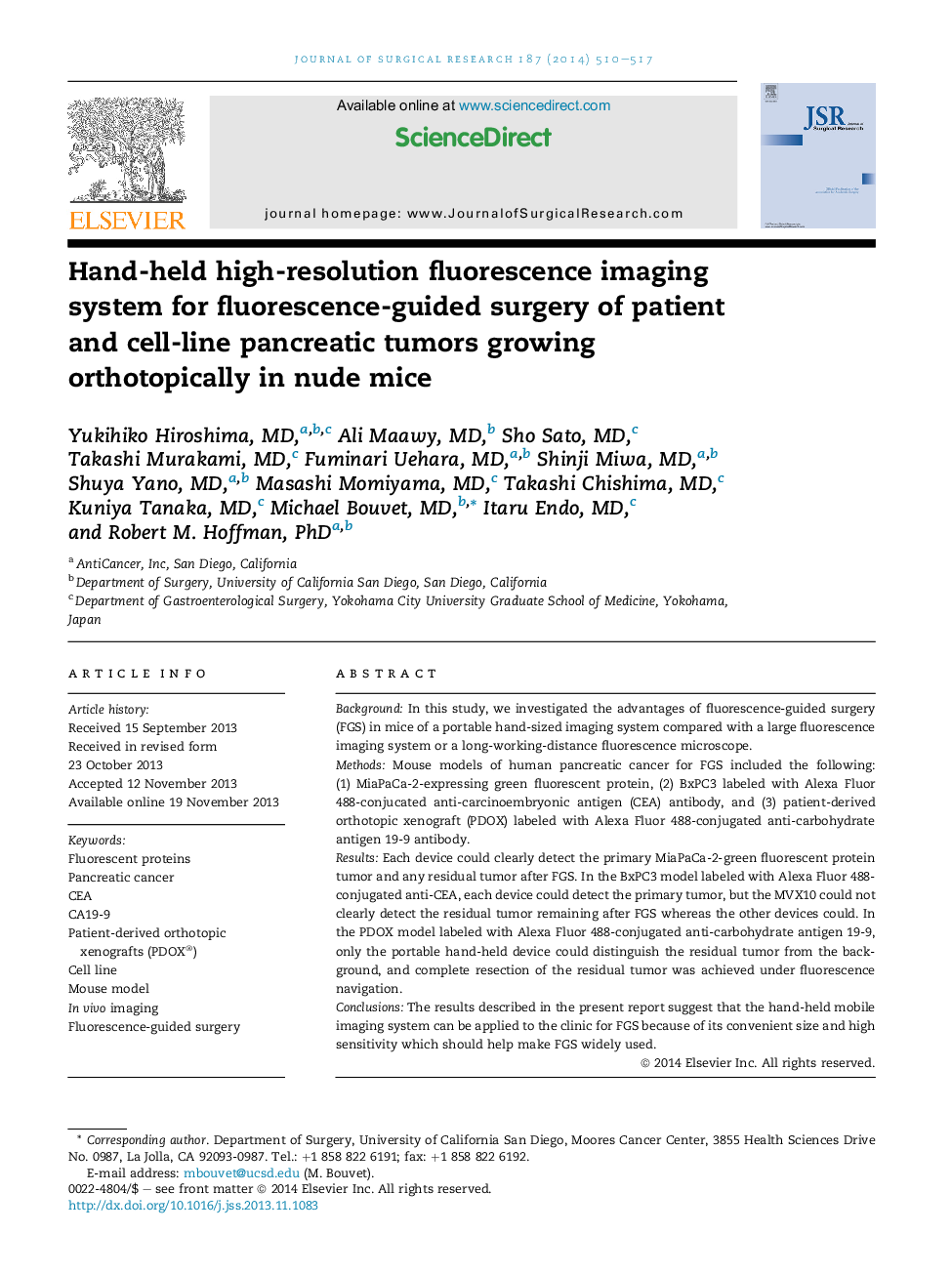| Article ID | Journal | Published Year | Pages | File Type |
|---|---|---|---|---|
| 4300422 | Journal of Surgical Research | 2014 | 8 Pages |
BackgroundIn this study, we investigated the advantages of fluorescence-guided surgery (FGS) in mice of a portable hand-sized imaging system compared with a large fluorescence imaging system or a long-working-distance fluorescence microscope.MethodsMouse models of human pancreatic cancer for FGS included the following: (1) MiaPaCa-2-expressing green fluorescent protein, (2) BxPC3 labeled with Alexa Fluor 488-conjucated anti-carcinoembryonic antigen (CEA) antibody, and (3) patient-derived orthotopic xenograft (PDOX) labeled with Alexa Fluor 488-conjugated anti-carbohydrate antigen 19-9 antibody.ResultsEach device could clearly detect the primary MiaPaCa-2-green fluorescent protein tumor and any residual tumor after FGS. In the BxPC3 model labeled with Alexa Fluor 488-conjugated anti-CEA, each device could detect the primary tumor, but the MVX10 could not clearly detect the residual tumor remaining after FGS whereas the other devices could. In the PDOX model labeled with Alexa Fluor 488-conjugated anti-carbohydrate antigen 19-9, only the portable hand-held device could distinguish the residual tumor from the background, and complete resection of the residual tumor was achieved under fluorescence navigation.ConclusionsThe results described in the present report suggest that the hand-held mobile imaging system can be applied to the clinic for FGS because of its convenient size and high sensitivity which should help make FGS widely used.
